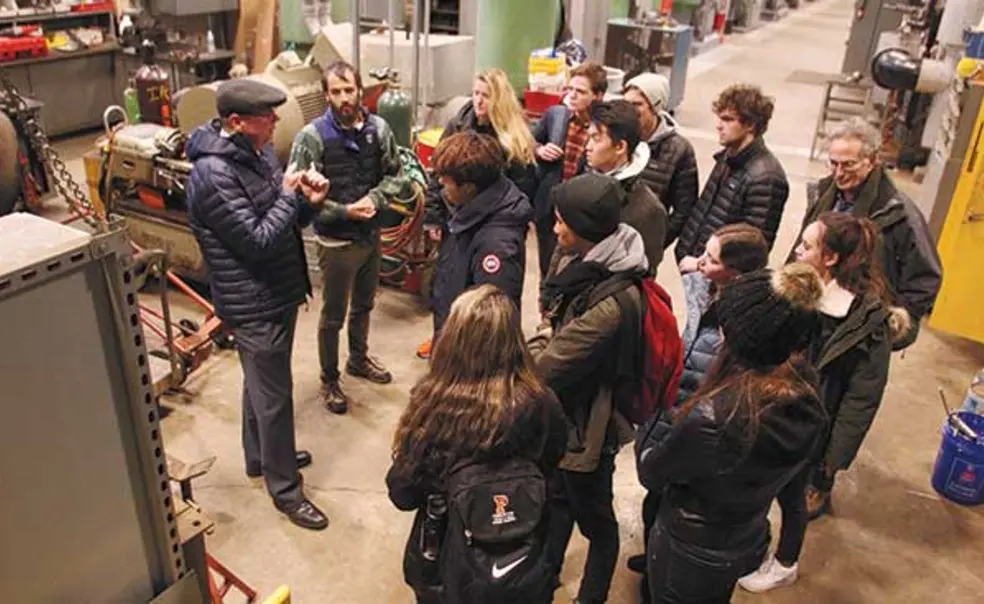Looking to the Future: Students Create ‘Time Capsules’ Predicting Climate-Change Impacts
How will climate change affect the Earth, society, and our daily lives in 50 years? Eleven students pondered these questions as part of “Time Capsules for Climate Change,” a fall-term freshman seminar taught by Robert Socolow, professor emeritus of mechanical and aerospace engineering.
After the class reviewed the history of climate change, each student selected a future-related subject for a final paper. Addressing topics ranging from genetically modified organisms to hydrogen cars, students described two possible outcomes and the potential personal and global impact in three, 13, 28, and 53 years. Their papers were sealed in the University archives in January and will be opened when the class graduates, as well as at its 10th, 25th, and 50th reunions.
In addition, each student was paired with a member of the class’s “grandparent class” — the Class of ’72 — who wrote an accompanying piece. PAW sat down with two students to hear more about their predictions.
SAMANTHA BENTS ’22: Malaria transmission in Africa
Two different outcomes The good scenario: Malaria has a good chance of being eradicated if a vaccine with a high success rate is created; also, if the amount of people living in poverty decreases and we avoid the worst effects of climate change, which could allow malaria to move to places it hasn’t been before or intensify in places where it already is.
The bad future is pretty much the opposite. There’s no vaccine; resistance to anti-malarial drugs increases; climate change does happen, and it intensifies malaria in places where we really need to eradicate it. And we don’t control the poverty problem.
Personal impact I hope that by 2072 I have a much bigger understanding of the problem — that I’ve been to Africa or another place and have worked with infectious diseases. I know I want to work in the public-health sphere, and I know I want to fight climate change.
YAEL STOCHEL ’22: Arctic whales
The ideal scenario In this scenario, I predicted that we’re able to keep global warming to an increase of 1.5 degrees Celsius. If we do that, there will definitely be a decline in the whale populations, but they would still be around by the year 2072. Right now there are 90,000 narwhals, 130,000 belugas, and around 22,000 bowhead whales. I predicted the same decrease for all three species, between half and three-quarters of the population. But bowhead whales are actually in recovery, so I predicted that first the population would recover, and then decline a little bit.
A different outcome The other scenario is if emissions continue to rise at the same rate [as they are now] — by the end of the century, [temperatures] could rise as much as about 3.6 degrees Celsius. I predicted that narwhals and bowheads would likely go extinct by 2072 or be close to extinction. Belugas would still be around, but in low numbers; they have shown signs of being more flexible.
The food factor Nutrients are stimulated by the melting ice, and they feed the entire Arctic food web. As the ice melts, this might actually lead to increased productivity because more nutrients are available. But if too much ice melts, and if not enough ice is building up, there will be a long-term decline.












No responses yet